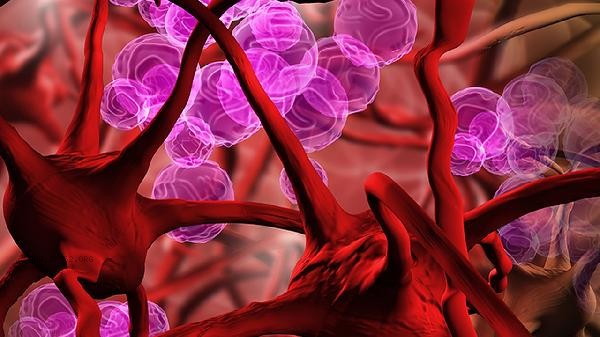The high proportion of eosinophils may be related to allergic reactions, chronic inflammation, myeloproliferative diseases, endocrine disorders, or drug factors. Eosinophils are a type of white blood cell, and an increase in their proportion usually indicates an abnormal immune response or pathological state in the body, which needs to be comprehensively judged in conjunction with other examination indicators.

1. Allergic reactions
When exposed to allergens such as pollen, dust mites, or specific foods, eosinophils release histamine to participate in hypersensitivity reactions. Patients may experience symptoms such as skin itching, urticaria, or allergic rhinitis. It is recommended to identify the cause through allergen testing and avoid further exposure to allergens. If necessary, follow medical advice to use antihistamines such as loratadine tablets or cetirizine hydrochloride capsules.
2. Chronic inflammation
Chronic inflammatory diseases such as rheumatoid arthritis and ulcerative colitis can stimulate bone marrow hematopoietic function, leading to compensatory increase in eosinophils. These patients often present with joint swelling, persistent low-grade fever, or diarrhea. It is necessary to improve the detection of inflammatory indicators such as C-reactive protein and erythrocyte sedimentation rate. After inflammation is controlled, the proportion of eosinophils may gradually return to normal.
3. Bone marrow proliferative diseases
Hematopoietic system diseases such as polycythemia vera and chronic myeloid leukemia can cause abnormal proliferation of eosinophils. The patient may experience splenomegaly, night sweats, or weight loss, and immature cells can be seen on peripheral blood smears. Diagnosis requires bone marrow biopsy and genetic testing, and treatment includes targeted drugs such as hydroxyurea tablets or imatinib mesylate tablets.

4. Endocrine disorders
Hypothyroidism or abnormal estrogen levels may affect the process of granulocyte differentiation. These patients often have symptoms such as chills, fatigue, or menstrual disorders, and need to have their thyroid and sex hormones checked. After regulating endocrine function with drugs such as levothyroxine sodium tablets or estradiol valerate tablets, the proportion of eosinophils can be improved.
5. Drug factors
Long term use of glucocorticoids, interferons, or certain antibiotics may interfere with white blood cell classification and counting. The proportion of eosinophils usually recovers spontaneously after discontinuation of medication, and blood routine should be monitored regularly during the medication period. If there is a tendency to have fever or bleeding, seek medical attention promptly and avoid adjusting medication plans on your own. When the proportion of eosinophils is found to be high, it is recommended to recheck the blood routine to rule out detection errors and observe whether there are other abnormal symptoms. It is necessary to maintain sufficient sleep in daily life, avoid overwork and mental stress. Moderately increase the intake of whole grains and lean meat rich in vitamin B family in diet, and limit the intake of high sugar and high-fat foods. If the value continues to increase or is accompanied by warning symptoms such as sudden weight loss and bone pain, it is necessary to go to the hematology department for specialized examination as soon as possible.









Comments (0)
Leave a Comment
No comments yet
Be the first to share your thoughts!